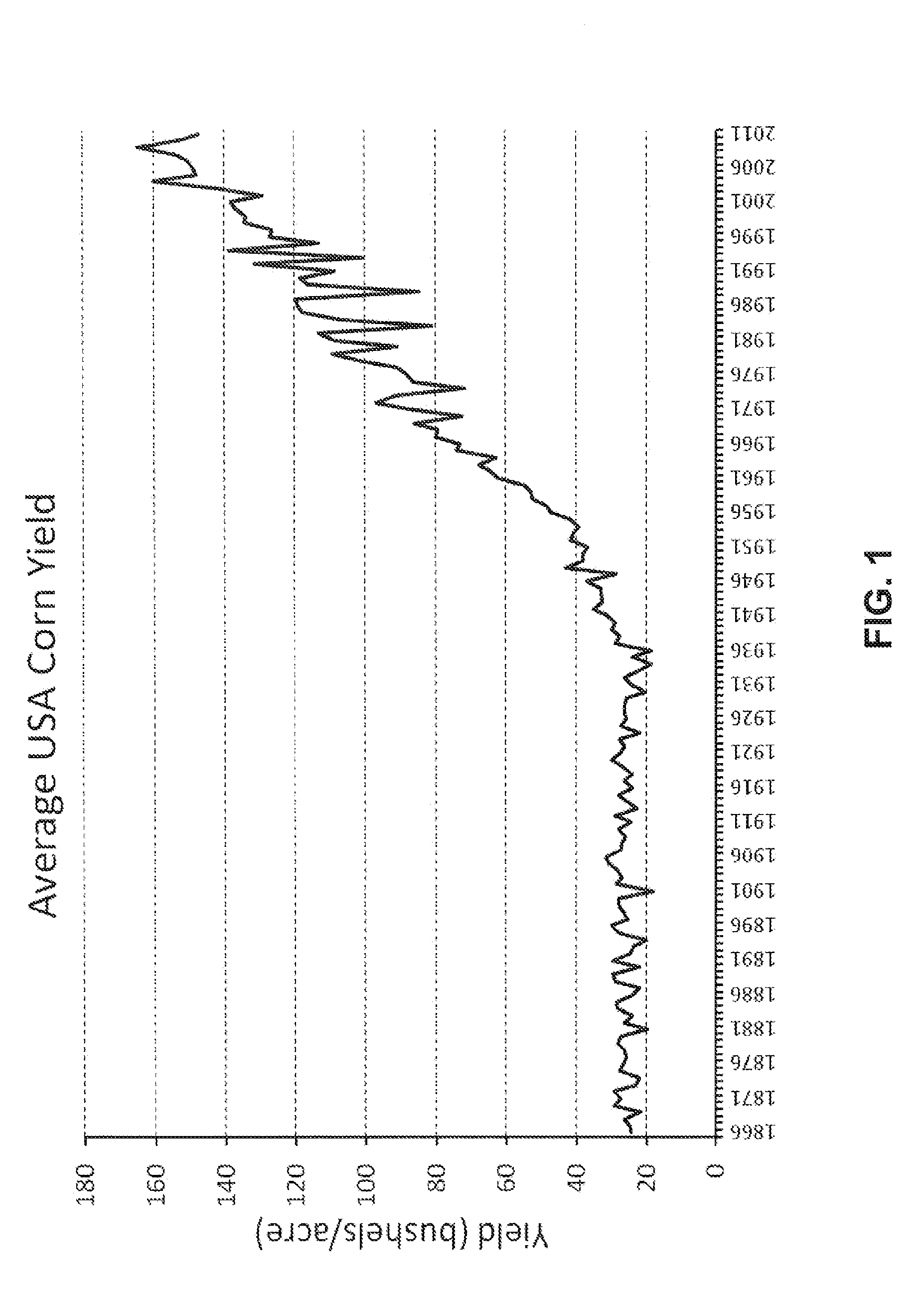Seed production
a technology for seed production and seedlings, applied in the field of seed production, can solve the problems of large amount of land required, lack or inefficiency, and limited scale of hybrid seed production in other crops, and achieve the effect of reducing contamination and improving genetic purity of the resulting seed
- Summary
- Abstract
- Description
- Claims
- Application Information
AI Technical Summary
Benefits of technology
Problems solved by technology
Method used
Image
Examples
example 1
[0052]The invention described herein was practiced using a sweetcorn hybrid that was homozygous recessive for a gene causing a shriveled kernel phenotype at maturity (the shrunken or sugary locus (Jennings. P. H. and C. L. McCombs, (1969) Phytochemistry 8(8):1357-1363) and homozygous recessive for the yellow loci which results in white endosperm (Buckner, B. et al. (1990) The Plant Cell, Vol 2, 867-876). This sweetcorn hybrid was used as the female and was cultivated in two 36.5 meter (120 foot) rows with no isolation from normal commodity grain corn plants (yellow endosperm kernels) and was not rendered male sterile (i.e. not de-tasseled). Males that had the white and not shriveled endosperm characteristic were present in ten 4.5 meter (15 foot) rows that were cultivated, on average, 6 meters (20 feet) from the female sweetcorn rows. The invention was practiced by coercing pollen from the tassels of the white endosperm males (pollenM) in the earliest part of the natural pollen shed...
example 2
[0054]In another working example, the invention described herein was practiced using a sweetcorn hybrid that was homozygous recessive for a gene causing a shriveled kernel phenotype at maturity (the shrunken or sugary locus) and homozygous recessive for the yellow loci which results in white endosperm. This sweetcorn hybrid was used as the female and was cultivated in two 69 meter (225 foot) rows with no isolation from normal commodity grain corn plants (yellow endosperm) and was not rendered male sterile (i.e. not de-tasseled). The surrounding normal commodity grain corn plants were used as males and had a normal endosperm (not shriveled) characteristic, and were present in all adjacent rows to the females. Further, water was sprayed on the tassels of the female rows at about 8:15 am in the morning to delay pollen shed from these female rows until about 8:45 am. After spraying the water on the female tassels, the invention was immediately practiced by coercing pollenM from the tass...
example 3
[0056]In this example, the invention was simulated using a homozygous waxy female parent and a mix of male parents that contained the functional or wild-type allele at the waxy locus (Nelson, O. E. (1968) Genetics 60: 507-524). The waxy allele is recessive and when it is in the homozygous state, representing self-pollination contaminants, it gives a characteristic opaque phenotype to the kernels which is easily recognizable to the naked eye. The females were cultivated in three 4.6 meter (15 foot) rows with no isolation and they were not rendered male sterile (i.e. not de-tasseled). Males were present in proximity and adjacent on all sides of the female rows. The invention was practiced by bagging the male plant tassels and coercing pollenM from males in the earliest part of the natural pollen shed period at approximately 8:30 am, thereby collecting it in the bags. The pollenM was then immediately directed to the waxy female silks by hand using techniques well known in the art invol...
PUM
 Login to View More
Login to View More Abstract
Description
Claims
Application Information
 Login to View More
Login to View More - R&D
- Intellectual Property
- Life Sciences
- Materials
- Tech Scout
- Unparalleled Data Quality
- Higher Quality Content
- 60% Fewer Hallucinations
Browse by: Latest US Patents, China's latest patents, Technical Efficacy Thesaurus, Application Domain, Technology Topic, Popular Technical Reports.
© 2025 PatSnap. All rights reserved.Legal|Privacy policy|Modern Slavery Act Transparency Statement|Sitemap|About US| Contact US: help@patsnap.com


